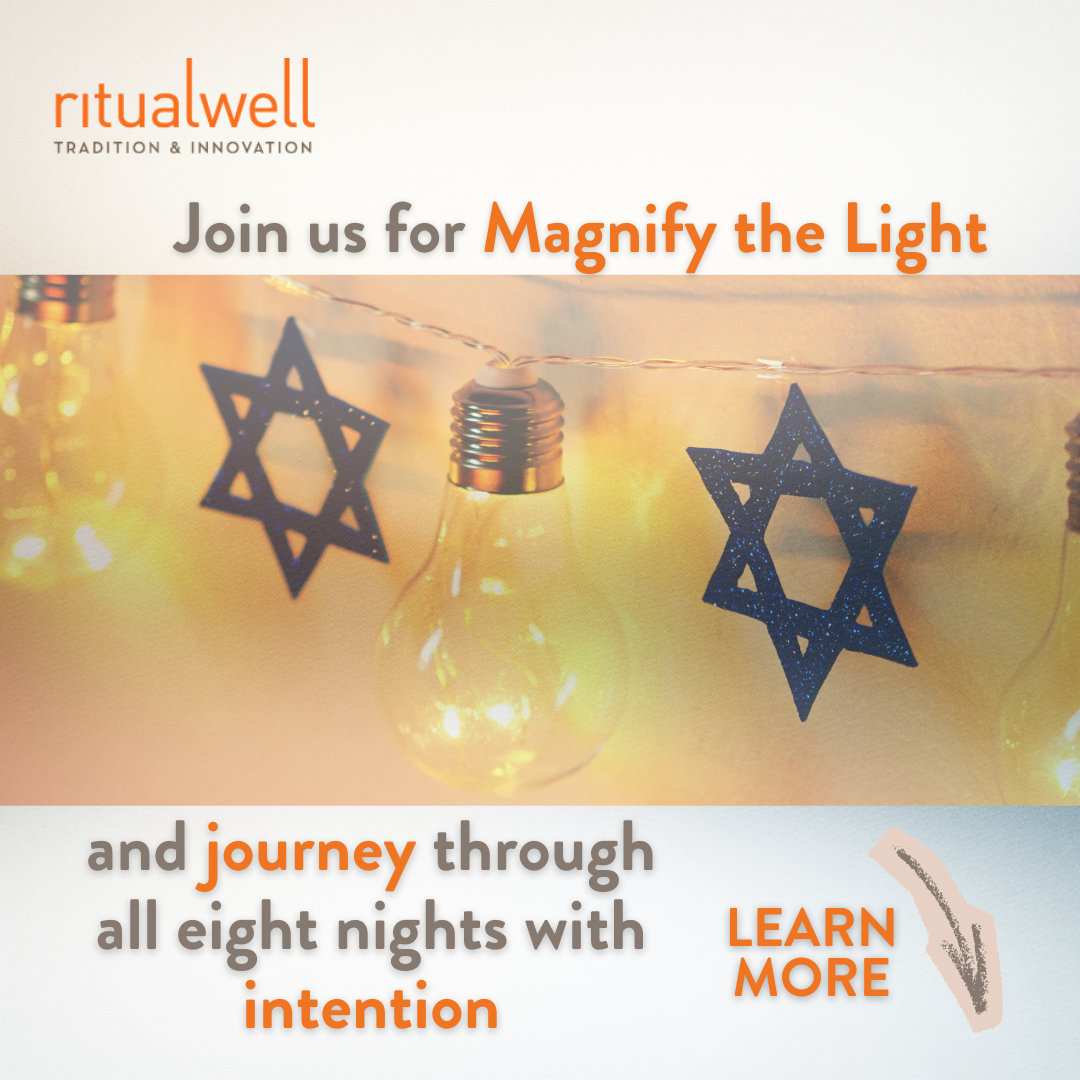Inspiration has never been a big part of my process. I much prefer deadlines.
-
Al regel akhat, on one foot: Tell us about your latest Jewish art project. My songwriting project, Girls in Trouble, is an indie-folk song cycle about women in Torah; I sing and play violin through a loop pedal. I’ve released three albums of Girls in Trouble songs, along with accompanying study guides for teens and adults, which I’m really excited about. And Divinity School is my book of poetry, published last year, which draws on Jewish texts and ideas along with lots of other sources.


-
Describe your artistic process for this particular project. I am a big fan of trial-and-error experimentation. I tend to just sit down and see what happens, without any critical judgment, just playing around. Then when I feel like I hit a vein, I follow it for a while. I guess it’s like panning for gold, or drawing blood. It feels like the work is out there (or in there), and I’m trying to divine it little by little. But if I get too serious about it, the whole endeavor falls apart.
-
What sources inspire you? The Talmud inspires me endlessly! And James Joyce’s Ulysses. And little snippets of conversation I hear all around me. And my bat mitzvah students. And my dreams, and my friends. Real conversation, where someone opens up about what’s going on under the surface in their life.
-
Is the process of artistic creation one that you would consider to be spiritual? Why or why not? Absolutely! You know how when you’re kneading challah, it feels sort of alive in your hands, heavy yet fluid? That’s how it feels when I’m making art. But instead of dough, it’s a poem or a song.
-
How do you reinvigorate your process if you feel uninspired? Inspiration has never been a big part of my process. I much prefer deadlines. That said, I work in many different art forms—poetry, music, composition, performance—so if I hit a roadblock, I just switch forms. Or look at someone else’s work I admire. Or google something and borrow a phrase to get me back on track. Or take a bath. Or go for a run. Once I stopped writing for four years, and I decided I had to be fine with that, too. I want to be in service of the art, not the other way around.
-
What are your favorite materials to work with and why? Poetry is my first language and I love how portable it is, how free: no equipment, no rehearsal, nothing but words. But music is magical in another way, and there’s nothing like live performance, when being alive in the same room is the medium for art itself.
-
Why do think it is important to include Jewish subject matter in your art? Well, actually, I don’t consider it important for me to include Jewish subject matter in my art. It happens a lot, and that’s great, but it’s not something I necessarily set out to do in every piece i create. My essential project as an artist is to create works of experimental beauty that investigate what it feels like to be alive, and to experiment with breaking down the boundaries that hold us apart from each other. And because I make art about what feels important and real to me, and Jewish ritual and text feels important and real to me, my art often involves these matters. Also, I like how Jewish texts get me out of myself; they are so much bigger than me, so much broader than my tiny little experience. I owe them a great deal, and I love them, and I’m grateful for all they bring to my work, but it’s also fine when they don’t appear in a specific piece.
-
Who is your favorite Jewish artist? James Joyce. (Whose book Ulysses is essentially a giant midrash on the Odyssey, and who once said the Irish and the Jews were “brother” races, so I nominate him as a sister Jew!) I also love the work of critic (not artist) Tikva Frymer-Kensky, and Avivah Zornberg, and I am digging Transparent right now.
-
What’s one piece of advice that has sustained you as an artist? If you aren’t getting rejected from nine out of ten things you apply for (grants, literary magazines, pitches, etc.), you aren’t aiming high enough.
-
Any other projects you want to lift up? Some of my favorite contemporary Jewish art: Two visual artists whose work I adore are Jacqueline Nichols (based in London) and Hadassa Goldvicht (in Jerusalem). And the wonderful klezmer-rock band Golem (who I played with for eight years and who are still going strong.) My original klezmer violin teacher, the brilliant Alicia Svigals. And anything Dan Saks, of DeLeon, does, as well as percussionist David Freeman (including his new project Sha’ar)!
Alicia Jo Rabins is a poet, musician and Torah teacher based in Portland, Oregon. She tours internationally with Girls in Trouble, her original indie-folk song cycle about biblical women. Rabins’s poetry book, Divinity School, won the 2015 American Poetry Review/Honickman First Book Prize. www.aliciajo.com






